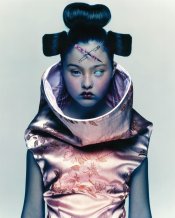CMB
Member
UltraStable Base
The UltraStable pigment films were coated on Kimdura, a synthetic paper (white, multilayer, biaxially oriented polypropylene film) manufactured by Kimberly-Clark that Tod continues to wash and reuse. Designed for use as packaging labels, it is available internationally from Neenah Paper Inc: http://www.neenah.com/technical/product.aspx?app_id=10&prod_id=24
I read somewherehere in the post, that it was yupo paper mr. Gangler was using.
-Vesa
The UltraStable pigment films were coated on Kimdura, a synthetic paper (white, multilayer, biaxially oriented polypropylene film) manufactured by Kimberly-Clark that Tod continues to wash and reuse. Designed for use as packaging labels, it is available internationally from Neenah Paper Inc: http://www.neenah.com/technical/product.aspx?app_id=10&prod_id=24



